Famous sites like Ueno Park and Sensoji temple look amazingly like they do today, but the people look entirely different.
Japan is filled with historic sites that still stand today with centuries of history behind them. And while pamphlets, guides, and even ages-old ukiyoe prints do their best to paint a picture of this history for visitors to the country, nothing tells the story quite like a moving image, especially when they include everyday scenes that show people of the time living their lives in the shadow of famous monuments and natural formations.
Now it’s time to take a peek at the past with a new video showing some amazing scenes of daily life filmed in Tokyo and Mount Fuji between the years of 1897-1915. Interspersed with some scenes from today, these black-and-white images capture the mood of the period, with young children playing games, carrying siblings on their backs, and going on school excursions while surrounded by adults dressed in kimono from the Meiji era (1868-1912) and the East-meets-West fashion style of the Taisho Period (1912-1926).
Take a look at the video below:
The clip starts with some grainy footage, showing a rickshaw rider alighting from a ride dressed in a coat and top hat, which was originally filmed by French filmmaker and visual travelogue pioneer Constant Girel in Tokyo’s Nihonbashi in 1897. The video then transitions to modern-day Japan with a walk through the streets of Nihonbashi (literally “Japan Bridge”), which is well-known for being Tokyo’s traditional centre of commerce and has been the kilometre-zero marker for the country’s national highways since the 17th century.
After a minute’s stroll, we step back in time once again, this time to view “Japan Under The Snow” at a village “on a slope of the Fouzi-Yama” (富士山, the Japanese for “Fuji-san”, or Mt Fuji, is transcribed here as “Fouzi-Yama”).
▼ Here, children enjoy snowball fights and stilt-walking, while ladies shelter under parasols.
The video then takes us back to today’s world, with a snowy scene filmed at Shirakawa-Go, a UNESCO World Heritage Site located in Gifu Prefecture. Then it’s back to 1913-1915, with fascinating views of Tokyo showing some familiar places that haven’t really changed all that much, even today.
▼ There are scenes showing the huge lanterns at Asakua’s Sensoji temple…
And scenes showing people enjoying “to the fullest the pleasures afforded by the numerous parks of the Empire” at Ueno Park in Tokyo (written out as “Uyeno Park, Tokio” in the film). The park was then, as it is now, “a very popular place, especially on Sunday afternoons”.
▼ The famous sakura trees at Ueno Park are bare in this winter scene, with people rugged up in coats over their kimonos outside restaurant buildings that still stand today.
While some children play and jostle for the camera’s attention, others help to look after their siblings by carrying them around on their backs, at a time when mothers were busy with big families at home.
The clip then ends at about 9:45, with the remainder of the video showing the busy streets of Shibuya today. Somehow, there’s a little less charm with people walking around in modern-day clothing, instead of kimonos and top hats, yet we’re left with a deeper appreciation of the city and the people who once walked about inside it. And now we’re inspired to go for a deep dive into Japan’s past with more videos and photos from the country’s archives!
Source: YouTube/Historic Video Archive
Images: YouTube/Historic Video Archive
● Want to hear about SoraNews24’s latest articles as soon as they’re published? Follow us on Facebook and Twitter!

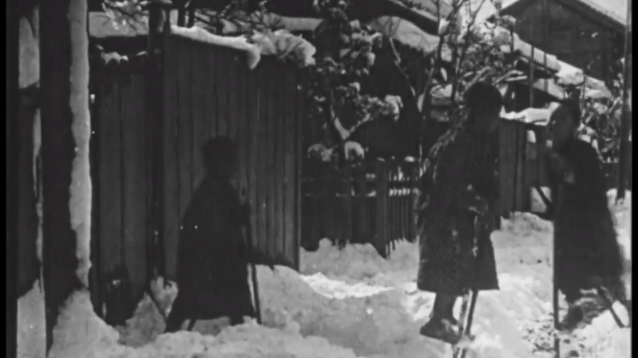
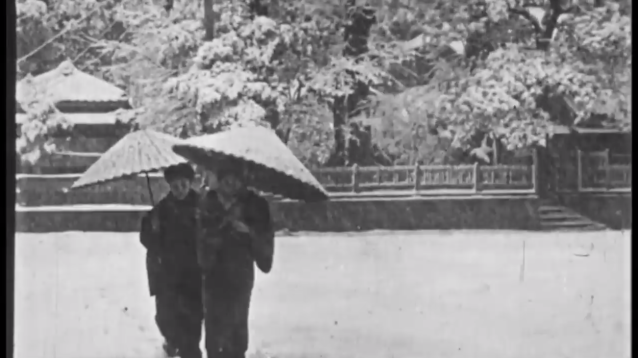
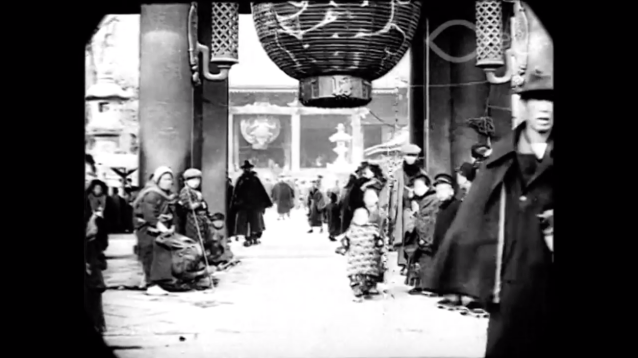
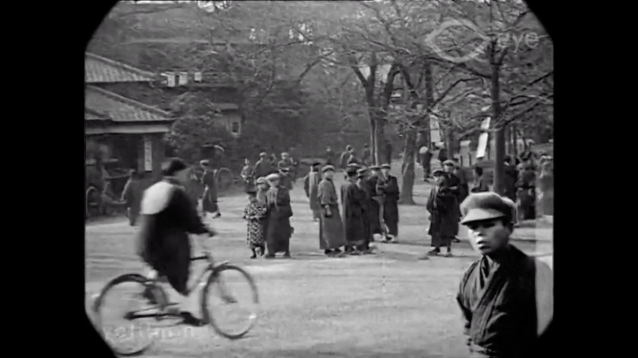
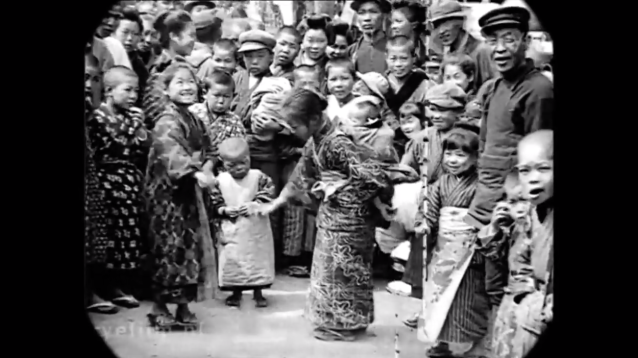
 Japanese console game market shrinks to nearly one-third its size ten years ago
Japanese console game market shrinks to nearly one-third its size ten years ago “Miraculous” cloud over Mt Fuji stuns the Internet
“Miraculous” cloud over Mt Fuji stuns the Internet Japanese rock band B’z re-open search for guitar lost 20 years ago
Japanese rock band B’z re-open search for guitar lost 20 years ago Tokyo museum’s current exhibition offers a dose of retro style and romance from 100 years ago
Tokyo museum’s current exhibition offers a dose of retro style and romance from 100 years ago Mt Fuji photo tricks the eye by looking like a moody ink painting
Mt Fuji photo tricks the eye by looking like a moody ink painting Foreigner’s request for help in Tokyo makes us sad for the state of society
Foreigner’s request for help in Tokyo makes us sad for the state of society Japanese-style accommodation at the new Premium Dormy Inn hotel in Asakusa will blow your mind
Japanese-style accommodation at the new Premium Dormy Inn hotel in Asakusa will blow your mind Ghibli Park now selling “Grilled Frogs” from food cart in Valley of Witches
Ghibli Park now selling “Grilled Frogs” from food cart in Valley of Witches Seaside scenery, history, and so many desserts on Yokohama’s Akai Kutsu【Japan Loop Buses】
Seaside scenery, history, and so many desserts on Yokohama’s Akai Kutsu【Japan Loop Buses】 All-you-can-drink Starbucks and amazing views part of Tokyo’s new 170 meter-high sky lounge
All-you-can-drink Starbucks and amazing views part of Tokyo’s new 170 meter-high sky lounge Smash Bros. director Sakurai stabs Kirby in the face, has delicious justification for it
Smash Bros. director Sakurai stabs Kirby in the face, has delicious justification for it New virgin-seducing lingerie collection from Japan throws virtue out the window【Photos】
New virgin-seducing lingerie collection from Japan throws virtue out the window【Photos】 Gorgeous Chinese woman creates one of Japan’s favorite mobile games, encourages microtransactions
Gorgeous Chinese woman creates one of Japan’s favorite mobile games, encourages microtransactions Akihabara pop-up shop sells goods made by Japanese prison inmates
Akihabara pop-up shop sells goods made by Japanese prison inmates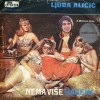 Top 27 ugliest album covers from Yugoslavia 【Photos】
Top 27 ugliest album covers from Yugoslavia 【Photos】 McDonald’s new Happy Meals offer up cute and practical Sanrio lifestyle goods
McDonald’s new Happy Meals offer up cute and practical Sanrio lifestyle goods Japanese ramen restaurants under pressure from new yen banknotes
Japanese ramen restaurants under pressure from new yen banknotes French Fries Bread in Tokyo’s Shibuya becomes a hit on social media
French Fries Bread in Tokyo’s Shibuya becomes a hit on social media Red light district sushi restaurant in Tokyo shows us just how wrong we were about it
Red light district sushi restaurant in Tokyo shows us just how wrong we were about it New private rooms on Tokaido Shinkansen change the way we travel from Tokyo to Kyoto
New private rooms on Tokaido Shinkansen change the way we travel from Tokyo to Kyoto Tokyo Tsukiji fish market site to be redeveloped with 50,000-seat stadium, hotel, shopping center
Tokyo Tsukiji fish market site to be redeveloped with 50,000-seat stadium, hotel, shopping center Japanese city loses residents’ personal data, which was on paper being transported on a windy day
Japanese city loses residents’ personal data, which was on paper being transported on a windy day Beautiful Ghibli sealing wax kits let you create accessories and elegant letter decorations【Pics】
Beautiful Ghibli sealing wax kits let you create accessories and elegant letter decorations【Pics】 Secret Kitchen bento serves Japanese flowers, birds, wind and moon in a box, but is it worth it?
Secret Kitchen bento serves Japanese flowers, birds, wind and moon in a box, but is it worth it? New definition of “Japanese whiskey” goes into effect to prevent fakes from fooling overseas buyers
New definition of “Japanese whiskey” goes into effect to prevent fakes from fooling overseas buyers Our Japanese reporter visits Costco in the U.S., finds super American and very Japanese things
Our Japanese reporter visits Costco in the U.S., finds super American and very Japanese things Studio Ghibli releases Kiki’s Delivery Service chocolate cake pouches in Japan
Studio Ghibli releases Kiki’s Delivery Service chocolate cake pouches in Japan More foreign tourists than ever before in history visited Japan last month
More foreign tourists than ever before in history visited Japan last month New Pokémon cakes let you eat your way through Pikachu and all the Eevee evolutions
New Pokémon cakes let you eat your way through Pikachu and all the Eevee evolutions Disney princesses get official manga makeovers for Manga Princess Cafe opening in Tokyo
Disney princesses get official manga makeovers for Manga Princess Cafe opening in Tokyo Sales of Japan’s most convenient train ticket/shopping payment cards suspended indefinitely
Sales of Japan’s most convenient train ticket/shopping payment cards suspended indefinitely Sold-out Studio Ghibli desktop humidifiers are back so Totoro can help you through the dry season
Sold-out Studio Ghibli desktop humidifiers are back so Totoro can help you through the dry season Japanese government to make first change to romanization spelling rules since the 1950s
Japanese government to make first change to romanization spelling rules since the 1950s Ghibli founders Toshio Suzuki and Hayao Miyazaki contribute to Japanese whisky Totoro label design
Ghibli founders Toshio Suzuki and Hayao Miyazaki contribute to Japanese whisky Totoro label design Doraemon found buried at sea as scene from 1993 anime becomes real life【Photos】
Doraemon found buried at sea as scene from 1993 anime becomes real life【Photos】 Tokyo’s most famous Starbucks is closed
Tokyo’s most famous Starbucks is closed One Piece characters’ nationalities revealed, but fans have mixed opinions
One Piece characters’ nationalities revealed, but fans have mixed opinions We asked a Uniqlo employee what four things we should buy and their suggestions didn’t disappoint
We asked a Uniqlo employee what four things we should buy and their suggestions didn’t disappoint National Film Archive of Japan releases shocking historical videos of 1923 Great Kanto Earthquake
National Film Archive of Japan releases shocking historical videos of 1923 Great Kanto Earthquake The top 10 things foreign tourists visiting Japan want to do during Golden Week
The top 10 things foreign tourists visiting Japan want to do during Golden Week 14 tips for visiting the Mt Fuji Shibazakura Festival, where beautiful “lawn sakura” blossom
14 tips for visiting the Mt Fuji Shibazakura Festival, where beautiful “lawn sakura” blossom Frightening video shows the effect of typhoon winds on Ferris wheel in Japan
Frightening video shows the effect of typhoon winds on Ferris wheel in Japan Ghibli Park: Opening date, first photos, and a new promo video produced by Studio Ghibli!
Ghibli Park: Opening date, first photos, and a new promo video produced by Studio Ghibli! Mt Fuji looks unusual, sparks fears of possible eruption
Mt Fuji looks unusual, sparks fears of possible eruption Live-streamer who slipped and died on Mt Fuji wins Darwin Award
Live-streamer who slipped and died on Mt Fuji wins Darwin Award Celebrate every day on the calendar with NHK’s historical videos of Japan!
Celebrate every day on the calendar with NHK’s historical videos of Japan! Hachiko, Japan’s most loyal dog, finally reunited with owner in heartwarming new statue in Tokyo
Hachiko, Japan’s most loyal dog, finally reunited with owner in heartwarming new statue in Tokyo Japanese version of Clean Bandit’s song “Solo” is set in Kyoto, impresses Japanese fans
Japanese version of Clean Bandit’s song “Solo” is set in Kyoto, impresses Japanese fans Asakusa’s Sensoji temple shocks store owners with sudden 16-fold rent increase in shopping arcade
Asakusa’s Sensoji temple shocks store owners with sudden 16-fold rent increase in shopping arcade A terrifying new way to view Mt Fuji: From a deck at the top of a giant rollercoaster!
A terrifying new way to view Mt Fuji: From a deck at the top of a giant rollercoaster! Japan’s oldest monorail is permanently closing next month
Japan’s oldest monorail is permanently closing next month Sakura in Japan 2019: The best spots for hanami cherry blossom viewing
Sakura in Japan 2019: The best spots for hanami cherry blossom viewing Enjoy a view of Mt Fuji from anywhere in the world with these new ice souvenirs
Enjoy a view of Mt Fuji from anywhere in the world with these new ice souvenirs
Leave a Reply